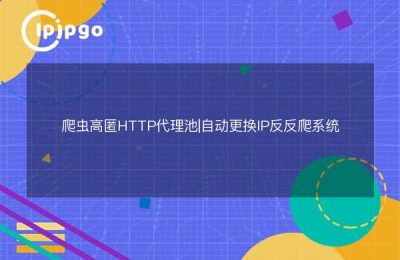
In the era of big data, web crawlers have become an important tool for obtaining information. However, using a crawler agent is not an easy task, and you may step on the mine if you are not careful. In order to help you make better use of crawler agents, we have compiled some precautions for their use. Whether you're a newbie or a veteran, these suggestions will help you to be a fish out of water in the crawler world.
Choosing the right type of agent
When choosing a proxy, it is important to first clarify what type of proxy you need. Common types of proxies include static proxies and dynamic proxies. Static proxies are suitable for long and stable crawling tasks, while dynamic proxies are suitable for short-term and high-frequency crawling tasks. Choosing the right type of proxy can effectively improve crawling efficiency and avoid various problems caused by inappropriate proxies.
Proxy IP quality
The quality of the proxy IP directly affects the effectiveness of the crawler. High-quality proxy IP is fast, stable, anonymous, and not easily blocked by the target website. Choosing a reputable proxy service provider ensures that you will get a high quality proxy IP, just like choosing a good car to run smoothly on the Internet highway.
Reasonable setting of crawling frequency
Reasonable crawling frequency is the key to avoid being blocked. Excessive crawling frequency can easily alert the target website and lead to IP blocking. You can simulate human behavior by setting reasonable crawling intervals to avoid frequent visits to the same page. Just like fishing, too much haste will only scare away the fish, wait patiently to reap the rewards.
Using Random User-Agent
Many websites will identify visitors by their User-Agent. To increase the stealthiness of your crawler, you can randomly change the User-Agent so that each request appears to come from a different browser and device. This effectively reduces the risk of being banned. It's like a cross-dressing detective that makes it hard to recognize each time it appears.
Setting up an agent rotation mechanism
Using a single IP for crawling is easily recognized and blocked by the target website. By setting up a proxy rotation mechanism, you can constantly change the IP during the crawling process, increasing the stealth and success rate of the crawler. Choosing a proxy service provider that supports automatic IP rotation will allow you to get twice the result with half the effort. It is like playing guerrilla warfare, constantly changing positions, the enemy is elusive.
Monitoring and Logging
In the process of crawler operation, real-time monitoring and logging are essential. Through monitoring, you can find and solve problems in time; through logging, you can analyze various situations in the crawling process and optimize the crawler strategy. It's like a logbook, recording the wind, waves and direction of each voyage to provide valuable experience for the next voyage.
Compliance with laws and regulations
Last but not least, the use of crawling agents must comply with relevant laws and regulations. Unauthorized crawling may involve invasion of privacy, intellectual property rights and other legal issues. Before crawling, be sure to understand and comply with the robots.txt file of the target website and relevant legal regulations. Just like an explorer, follow the rules to move forward safely.
summarize
The use of crawler proxies may seem simple, but it contains many tips and considerations. Choosing the right proxy type, ensuring the quality of the proxy IP, setting the crawling frequency reasonably, using random User-Agent, setting the proxy rotation mechanism, monitoring and logging, as well as complying with the laws and regulations are the keys to successful use of crawling proxies. I hope these suggestions will help you navigate the crawler world and get the information you need.








